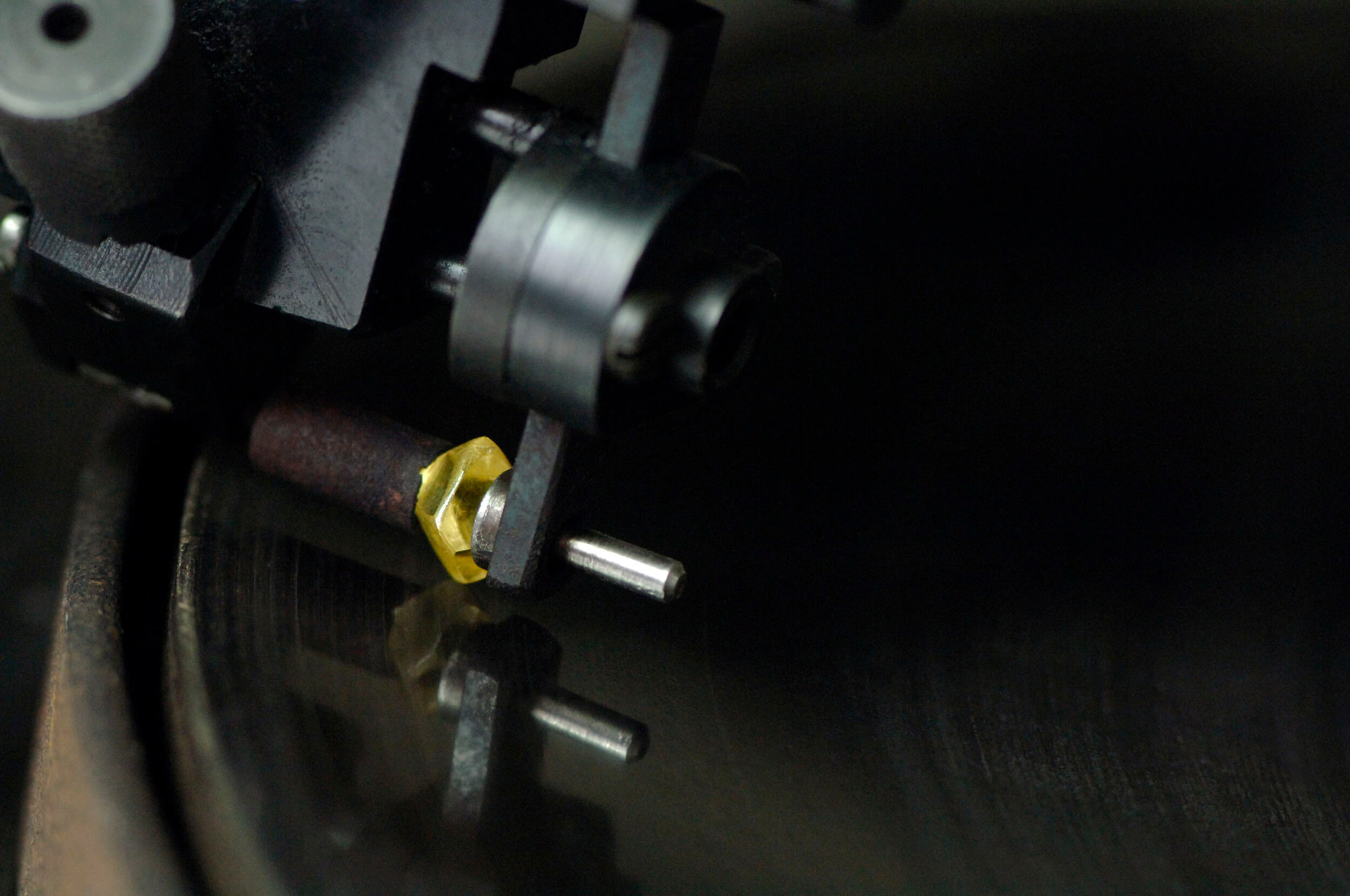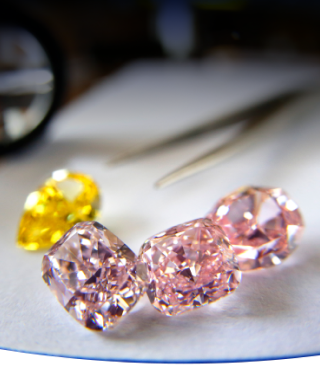Traditions, rituals, and cultural identities are inherent within the cut of a fancy color diamond.
After years of analyzing fancy color diamonds, it is unclear whether there are explicit differences in the way that stones are polished on different continents. Over time and after thorough examination, specific stylistic patterns have emerged. Though a novice will not detect these distinctions, experienced professionals may occasionally be able to identify subtle differences and features.
These recurring characteristics do not necessarily add monetary value to stones, but they deepen knowledge, tell a stone’s story, and help determine its cutting origin. Whether hailing from Belgium, India, Israel, or the United States, small telltale signs detected in the cut of a fancy color diamond speak to the distinct artistry exhibited by diamond centers around the world.
Unlike colorless diamonds, fancy color stones are cut “freestyle” without universal parameters. The characteristics below refer primarily to cushions and radiants, as it is easiest to spot nuances in these common shapes. Most fancy color cushions and radiants tend to look very similar regardless of where they were polished, but many carry a distinct geographic polish fingerprint.
FANCY COLOR POLISHED IN ANTWERP, BELGIUM
Characteristics: A typical Belgian cut is characterized by the absence of a colorless frame, a shallow crown, a large table, and four steep wall facets on the bottom of the stone, just below the pavilion (usually creating a high depth percentage). The “berlandere” facets on the pavilion reach very close to the culet. This cut is common in diamonds that have gone through a sawing process, and the outcome corresponds well with their shallow crown and large table.
Advantages: Very good color dispersion and symmetry, usually without extra facets and very few naturals
Disadvantages: High depth percentage (a large amount of material is usually lost to achieve this cut)
FANCY COLOR POLISHED IN SURAT, INDIA
Stones produced in India are not meticulously polished and have a high depth percentage. Over the past three years, a new fancy color style has developed, with a distinguished cut and shape.
Characteristics: A sharp-edged cushion and a small table with “berlandere” facets that are far away from the culet
Advantages: Excellent color dispersion
Disadvantages: This shape is untraditional and its possibilities for design are very limited. These stones are cut with a high crown and have very high depth percentage.
FANCY COLOR POLISHED IN NEW YORK
Fancy color diamonds cut in New York are similar to the standard cut commonly seen in Israel with very minor variations.
Characteristics: Some diamonds polished in New York cannot be distinguished as a “New York cut” unless they are viewed with a loop. The visible differences can only be seen on the “berlandere” facets on the pavilion, creating a shape of a “clothing peg” (figure 5). These facet characteristics do not impact the diamond’s value.
SUBCATEGORY, RECUT FROM POLISHED ROUND DIAMONDS
This subcategory is common in all geographical markets but the majority of these diamonds originate in New York, where this type of cut was first conceived.
Characteristics: These stones are usually characterized by many colorless patches and large corners. As they are cut from what used to be a traditional round brilliant with a lighter saturation, their low depth percentage is inherent. Very high clarity is also common, as most inclusions were removed when the rough was polished to a traditional brilliant cut. Due to the fact that new modified facets were cut on top of older facets from the initial brilliant cut, the symmetry grade will generally not reach “excellent” grade.
Advantages: Stones will appear large in relation to their carat weight, and most of them will have high clarity
Disadvantages: Many colorless patches in the crown surrounding the table, a quality that will decrease the stone’s value
FANCY COLOR POLISHED IN ISRAEL
Much like the country itself, Israel’s fancy color diamonds combine influences from other nations. Mainly influenced by New York, the most common cut in Israeli stones is the “standard” set with 38-42 degrees degrees on the crown and 33 degrees on the pavilion, resulting in an average color distribution with some colorless patches on the crown (figure 10,11).
The Israeli market is saturated with midsize fancy color manufacturers selling their product in the local market. Many of Israel’s fancy color stones will therefore not be meticulously polished to meet the standards of the international jewelry brands and are left with naturals, chips, and open feathers, even in areas that are visible to the naked eye. Sometimes, these stones are improved and undergo a second round of polishing before being sold overseas.
The typical Israeli polishing style does not have any particular advantages or disadvantages.







